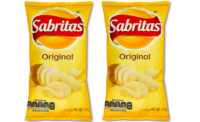A New Look at the Stick Pack
A New Look At the Stick Pack
By Aaron L. Brody
Thirty years since its debut, the stick pack has gone mainstream. But many marketers who could differentiate themselves with the format barely notice stick packs because they have become ubiquitous.
So what exactly is a stick pack? Essentially, it is a tube-shaped flexible pouch sealed across the top and bottom. Smaller than a conventional pillow pouch, a stick pack houses less product and requires up to 45 percent less material than traditional square or rectangular packages (often seen in single-serve condiment packaging).
Japan’s Sanko Machinery is credited with introducing sweeteners in the stick pack format in the 1970s—an effort to reduce material usage. Soon condiments, non-dairy coffee lighteners, instant coffee and “nutritionals” began to appear in the new format, which was touted for providing: portion control; convenience (the sticks fit conveniently into a pocket or purse); tamper evidence; and usability (easy-open and dispensing features).
Success in Japan was followed by interest in the United States in the mid-1990s, for a variety of dry and liquid food products. The ultimate trigger, however, was General Mills’ Yoplait Go-Gurt yogurt tube, which adopted the stick pack format and, as a result, revolutionized the category. It also triggered widespread acceptance of the format among consumers, which led brand owners to re-examine their existing packaging.
In the fluid category we’ve seen stick packs used with Hunt’s Squeeze ‘n Go portable pudding and Kraft’s Jell-O and Hershey’s pudding, all aseptically packaged for ambient temperature distribution. Stoneyfield yogurt and other private label “portable” yogurts have followed General Mills’ lead with the squeezable format.
Then there’s peanut butter and jelly, which have long been packaged in flexible tubes for institutional food service applications. But Skippy brought the innovation to the grocery aisle with its “Squeeze Stix” form.
In the dry powder category, Nestlé’s Tasters Choice instant coffee; Kraft’s International Coffees’ Cappuccino Coolers; Smucker’s Magic Shake; Abbott Labs’ Similac infant formula; Mead Johnson’s Enfamil infant formula; Domino® sugar; Lipton’s Green Tea to Go; and 4C Tea2Go have all incorporated stick pack packaging.
Consumer benefits
Though there are cost-saving attributes (stick packs require less material to house the same amount of product as other flexible pouches), these brands have adopted the format largely because it allows them to meet consumer demand for convenience. Note the positioning of the products: portability and “on-the-go.” These are familiar themes for marketing today. The positioning of pudding and peanut butter products as “squeezable” also allows brands to reward consumers with an experience, adopting a fun-type orientation that engages kids.
Retail friendly
Stick packs also have advantages at retail. Stack packing (aligning the individual sticks in log fashion) is both volume efficient and it protects and displays the primary sticks. Sticks may be stacked either vertically or horizontally within a paperboard carton that is die-cut to display the contents, which grants easy access for consumers. Many recent stick pack offers have also been multi-packed in closed paperboard cartons because marketers perceive the primary package to be so well known that it need not be visible.
The phenomenon of the stick pack is indicative of what is hardly an uncommon packaging strategy: one of imitation. Brand owners tend to resist packaging innovations, citing prohibitive capital investments when the concept is thrust upon them by suppliers; but they often leap when a competitor suddenly steals market share by boldly introducing a unique packaging concept for an old product or a new category. With contract packagers becoming more prevalent, and the capital investment argument less convincing, we likely will see a plethora of new products—almost assuredly in new categories—limited only by the imagination of brand marketers, package designers and their development teams.
The author, Aaron L. Brody, Ph.D., is President/CEO of Packaging/Brody Inc., a consultancy in food, packaging technology and marketing. Contact Dr. Brody at 770.613.0991 or aaronbrody@aol.com
Looking for a reprint of this article?
From high-res PDFs to custom plaques, order your copy today!







